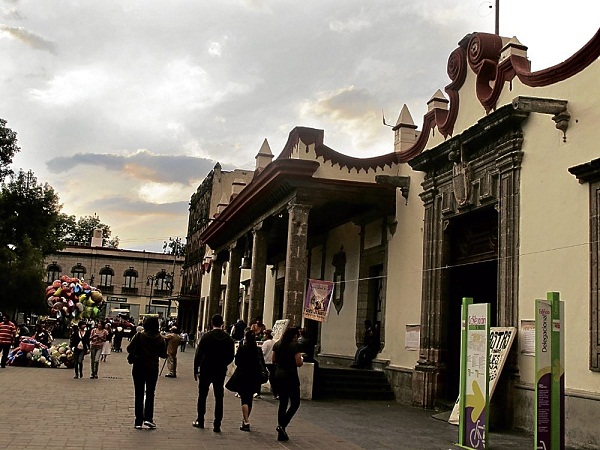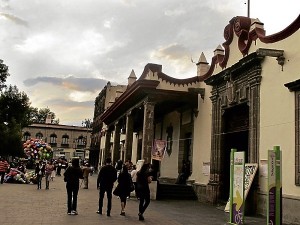
For a Filipino, visiting Mexico is like coming home. Strangely, inexplicably, we will feel that we have journeyed far away without leaving our shores at all.
Having been ruled from Nueva España (as Mexico used to be known) until about 1810, the Philippines has much to share with its counterpart on the other side of the Pacific.
Due to the exchanges fostered by the Galleon Trade, there are many plants and animals, crafts and customs found here which would be familiar to Mexicans.
That’s on one hand. On the other hand, we may have common words which will have different meanings. For some things are lost in the transfer between continents. “Guachinango” may be a ruffian in Bohol but it is a kind of fish in Mexico.
This point about dissonances in the guise of commonalities was made clear during a forum to which I was recently invited in Mexico City. One of the speakers expounded on how the word “barrio” was used in divergent ways in the former Spanish empire.
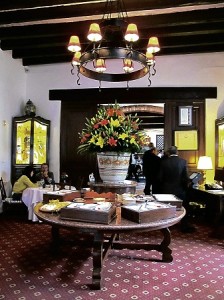
In the Philippines, when we think of “barrio”, images that come to mind are quite idyllic. Life in such a place is associated with an arcadian tranquility probably because of depictions by Fernando Amorsolo and his followers.
Moreover, the implied context is rural as will be seen, for example, in Juan Flavier’s book, “Doctor to the Barrios.”
In contrast, in the Latin American world, a barrio is an urban neighborhood. In California, the term refers to a Hispanic ghetto or slum. This is probably indicative of the dismal conditions many immigrants from south of the border must endure when they first venture into the US.
In Ernesto Galarza’s iconic novel, “Barrio Boy,” the title refers to the Sacramento slum where the main protagonist ends up.
Ironically, a recent campaign to declare certain metropolitan areas as “barrios magicos” shows how capitalinos, as residents of Mexico’s political center are called, seem to regard barrios as sites of nostalgia, pockets of gentility that have been swallowed by the urban sprawl.
I am reminded of our own Santa Ana which used to be an independent town until it disappeared into the morass of Manila.
Another example would be Malabon, which is now practically indistinguishable from the rest of the city but whose residents cling to a waning identity. At the very least, Malabon, unlike Santa Ana, still has its own mayor.
Historic restaurant
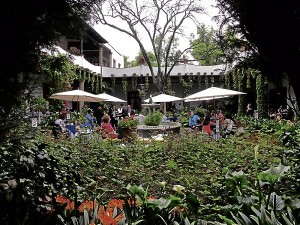
Perhaps it was with the aim of acquainting me with a more gracious side of her ciudad that my host, Dr. Aurora Gomez, director of the Mexican National Archives, decided I spend my first full day in her country exploring the streets of two districts which were on the enchanted list: San Angel and Coyoacan.
San Angel takes its name from an important Carmelite monastery in the vicinity. Today, the major crowd drawers are the weekend bazaar and the restaurant at the San Angel Inn.
The latter is housed in an old building that was once part of a plantation which had been active for more than a hundred years. In the 1930s, the Inn was operated by a French woman named Madame Roux who made San Angel a mecca for the rich and famous.
I sat in the celebrated restaurant courtyard with its gently curving arches and brilliant flowers. I felt privileged to be in a quiet corner of the land which still managed to play a role in the nation’s history. Revolutionaries met here, poets wrote here.

I thought it interesting that capitalinos were out in full force, packing the courtyard. This would be the equivalent back home of urbanites trekking out to Malabon to savor pancit on a leisurely Sunday.
Though this isn’t the case at the moment, perhaps someone could start this trend. Certainly there are enough beautiful heritage houses in Malabon which can be transformed into culinary havens.
We ended the day in neighboring Coyoacan. This barrio magico which has been a flourishing community since the Pre-Spanish period derives its name from the Aztec for “place of coyotes”. One will, therefore, encounter the animal painted on many signs.
I was impressed with the centuries-old edifices that lined the avenues. Yet, I shook my head: Mexico, unlike the Philippines, is so fortunate because it did not go through the destruction of the Second World War. Even an unassuming district like Coyoacan could boast incredible vintage architecture which would be a marvel back home.
Ancient, contemporary
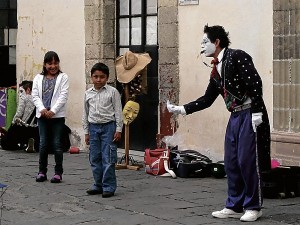
Wonderfully, many of these ancient structures have been restored for contemporary uses. One old house is now a municipal library. Another hosted a crafts museum. It was here that I encountered a remarkable baked clay piece—a Last Supper not of Christ and his disciples but of demons!
Walking around the plaza with my guide Alberto, I had the sensation of being back in the Bacolod of my childhood. I saw the same palm trees, the same bandstand, the looming presence of the cathedral. People were enjoying themselves, sitting on the grass or on benches, doing nothing.
I saw a man selling balloons and was amused to find that one was shaped like the nation’s patroness, the Lady of Guadalupe.
I saw an old vendor offering little mobiles of sea creatures painted in bright colors. There was even an actor entrancing a considerable gathering with his mime performances.
I pondered once more that adage: the best cities to visit are the best cities to live in. A community designed for the maximum contentment of its residents also effectively generated extensive tourism.
Paradoxically, the more one strives to build tourist attractions while ignoring the needs of the locals, the less visitors one will receive. Happiness is the most efficient magnet.
Another surefire attention-grabber is, of course, food. I noted the large number of sidewalk cafes all over the neighborhood. Many of these were patronized for a specialty dish. There was even a long line to a particular coffee outlet which boasted that it had been serving up “el aroma y tradicion desde 1953 en Coyoacan.” What could possibly be the secret of their brew?
Perhaps the most fascinating shop was a well-known ice cream parlor. The offerings were so delicious that my friend Alberto couldn’t resist ordering two cones for himself in one go. Even as he was busy demolishing one iced delicacy, another was already melting away into a glorious goo in his fist!
Part of the reason for all this frenetic consumption was probably the galaxy of flavors that was available. One was provoked to want to try everything all at once! Looking at the list, I recognized the familiar “mango,” “piña,” and “guayaba,” but there were also the unknown “zapote” and “mamey.”
I surmised that the last two, like everything else being served, were fruit-based. I vaguely recalled that there is an area in Cavite named Zapote. I also know from my friend Lino Dalay that in Paete they have what is called “chico mamey” which looks like an elongated santol.
It suddenly struck me that this list of sherbets was a summary of our two nations shared histories. For mango originated from Asia while piña, guayaba, zapote and mamey, though native to the Americas, were now encountered in our own gardens. All these were evidence of the many exchanges between the Philippines and Mexico.
I made it a point to order a scoop each of mango and of zapote. Looking at the two frosted globes on my cone, I too felt content. It is wonderful to have our past in hand.
On one of my last days in the capital, I was taken to see a private archive in still another barrio—Chimalistac. While waiting for my appointment I had time to wander around. My eyes took in the stately homes, the dignified trees, the stone cross at the very heart of the tiny village square.
Entering the charming chapel, I was amazed to find a splendid retablo, so exuberant in such a somber a setting. It was comforting to know that what I had just seen were elements replicated all over
Mexico. They made up a pattern that signified a placid continuity of graciousness which survived and flourished in the face of centuries.
The writer wants to thank Dr. Aurora Gomez, Isabel, Alberto, and the Mexican Embassy for assistance with his trip.
Send questions and comments to inomanalo@gmail.com.

